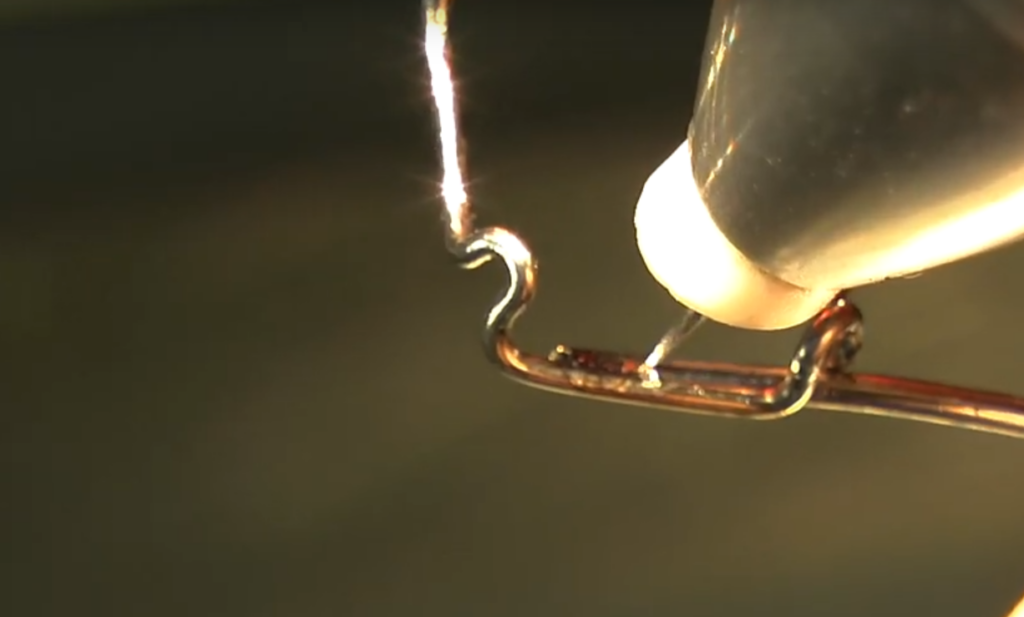Connect or repair wire elements:
Wires used in orthodontics are often made of stainless steel alloys, which are well suited to TIG welding.
For example, there are appliances where two wires have to be welded in parallel.
In addition to a clean and grease-free surface, it is important to start with a freshly ground electrode. If the electrode is already somewhat worn, the wires cannot be contacted at their contact zone and only two individual welding spots are created on their flanks instead of the wires themselves fusing together.
Link to application video I
Link to application video II
When welding broken wire elements that need to be reactivated afterwards, e.g. on a labial bow, it is advisable to double the welded joint with a suitable wire over several millimetres in parallel after the joint has been welded, as this usually would be done when welding with a laser. The additional wire also provides a certain spring hardness. If the ends of the break were simply butt-welded together, the weld would be too brittle to be bent in this area.

Video: Welding spring-hard ends of stainless steel wires
This procedure (doubling up) would also be advisable for the following application example, provided the occlusal space conditions permit this.
